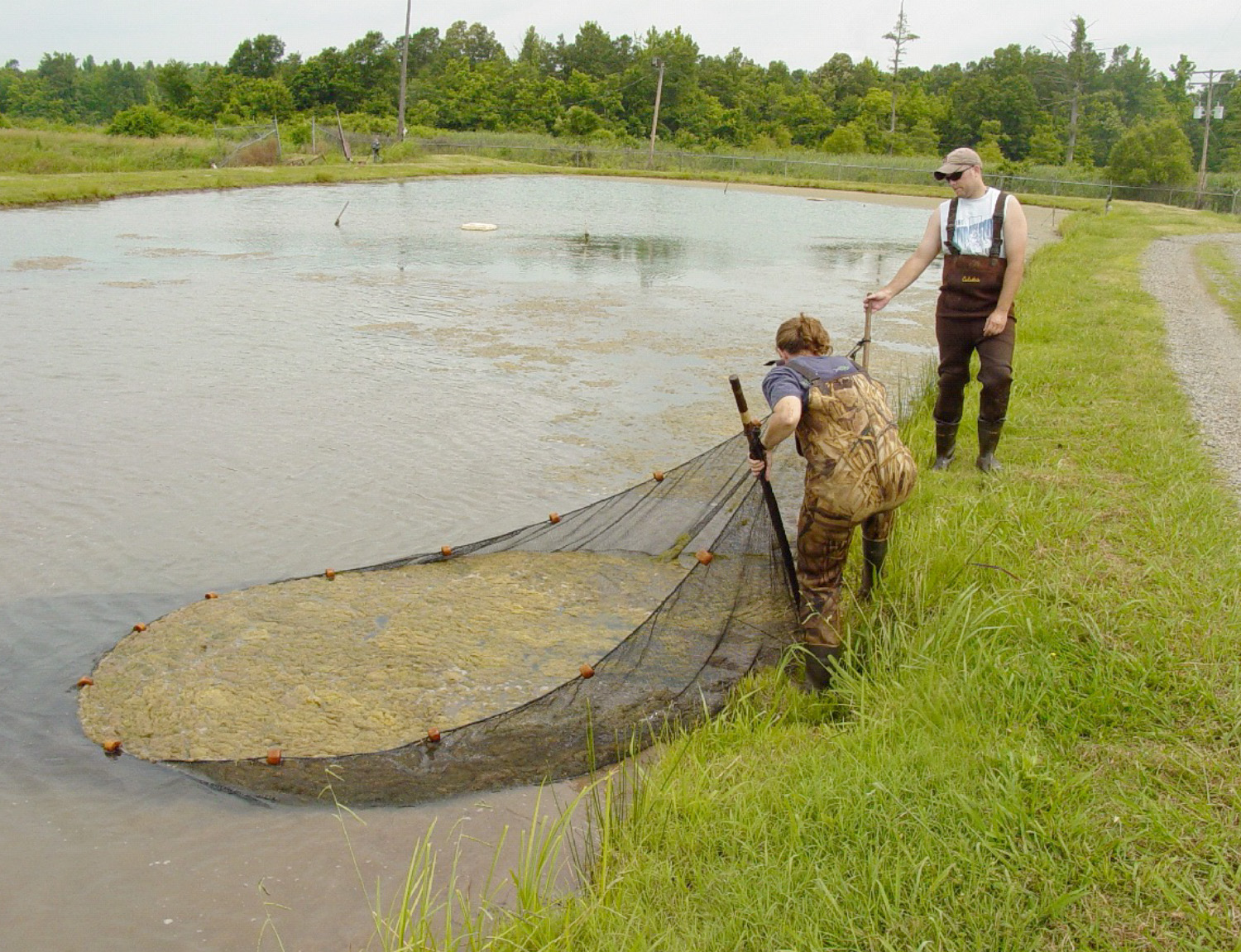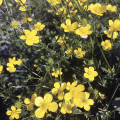Basic Approaches to Weed Management
Basic Approaches to Weed Management
The best solution to aquatic weed problems is prevention, but often weed issues develop despite our best efforts. When this happens, there are several ways you can address the problem. Most of the time, a combination approach works best.
Physical Control
Rooted plants cannot grow where sunlight does not reach the bottom, so deepening shallow pond edges so they drop quickly to 3 feet deep is an effective means of reducing weed coverage. Use a 3:1 (1 foot increase in depth for each 3 feet from shore) slope so the bank remains stable and does not collapse.
Another physical technique, called a drawdown (a reduction in water level), can be effective and economical in controlling many kinds of aquatic weeds. Drawdowns should be done in the winter and should expose weed-infested shorelines to drying and freezing temperatures.
You can use pond dyes to control submersed aquatic weeds by shading the plants so they do not get enough sunlight. Use dyes only in ponds that have little outflow, since flowing water washes the dye out of the pond. Dye reduces pond productivity and should not be used in ponds that are fertilized.
Although pond liners are a form of physical control sometimes used for aquaculture and municipal ponds, they are generally too expensive and impractical for private ponds.
Mechanical Control
Mechanical control may be as simple as cutting a willow tree or removing a few unwanted plants (such as cattails) that have just gotten started along the water margin, or it may involve raking or seining algae on the bottom or free-floating at the surface. While cutting and removing a few plants by hand can be effective in small and limited areas, mechanical aquatic weed control on a large scale is generally difficult and impractical.
Mechanical plant removal is usually not a permanent solution, as plants may grow quickly and recolonize, but it can be used to clear the majority of plants to improve effectiveness of other techniques such as biological or chemical control.

Biological Control
Biological control uses an animal or other living organism to control the weeds. Biological control has many advantages over other weed control means. It takes much less human effort than most mechanical control means and does not require expensive and sometimes hazardous aquatic herbicides. Further, using animals provides longer-term control than other means, since the animals usually live several years.
Triploid grass carp (white amur) from China are commonly used for aquatic weed control. How much vegetation grass carp will consume depends on several environmental conditions, such as water temperature, water chemistry, and the kinds of plants available. Consumption rates also vary with fish size. For example, until they reach weights of about 6 pounds, grass carp may eat 100 percent of their body weight in vegetation per day. As they grow larger, consumption decreases; up to about 13 pounds, they will eat 75 percent of their body weight per day, and above 13 pounds, they slow down to about 25 percent of body weight per day.
Grass carp prefer soft, low-fiber aquatic weeds such as duckweed and various submersed plants. However, grass carp cannot necessarily control some of the plant species they “prefer” to eat. These plants grow very quickly, and grass carp may not be able to eat them quickly enough.
Duckweed is a good example of a plant that grass carp love but usually cannot control. One solution is to increase the density of grass carp, but this carries its own risks. In cases where 15 or more grass carp per acre are stocked, it is a good idea to remove many of these fish once weeds are controlled.
If the species of plants they want are not available, carp feed on new growth of less-desirable plants and on plants above the water surface. It is this strong appetite for plants that makes grass carp useful in controlling aquatic weeds.
The number of grass carp required to control weed problems varies, depending on the degree of weed infestation, kind of weed, size of pond or lake, and size of fish stocked. The general rule in farm ponds is to stock enough grass carp to control the weeds in one to two seasons but not so many that they quickly eat all vegetation. The best approach is to consider the grass carp as a weed maintenance tool rather than a total elimination tool.
For most farm pond situations where weeds have already become a problem, five to ten grass carp per surface acre usually achieve desired weed control. In ponds with severe weed problems, higher rates of 15 to 20 grass carp per acre may be necessary for plant control. In such cases, it is sometimes more effective to treat the pond chemically with an herbicide first, and then stock moderate numbers of grass carp.
Chemical Control
Identifying a problem weed is the first step to controlling it. Herbicides are generally species-specific, meaning they are effective only on certain plants. Chemical control requires using aquatic herbicides (and surfactants) that have met strict Environmental Protection Agency (EPA) standards for use in an aquatic environment. The herbicides are of low toxicity to fish and wildlife (and humans) when used according to guidelines, rates, and restrictions specified on the label for each herbicide.
Some herbicides have limited livestock (cattle) restrictions before reentry into treated areas and limited irrigation use immediately following treatment. Chemical control has its limitations. Applying herbicides may require specialized equipment and expertise. Some herbicides can be very expensive, and some may not provide prolonged weed control.
Further, weeds may recolonize after treatment. Return of the same or another weed problem is often likely, requiring more applications of herbicides. It is important to eliminate the conditions that encourage the growth and spread of aquatic plants, and consider preventive methods like stocking triploid grass carp at three to five per acre after treatment.
Before using any chemical control, correctly identify the aquatic weed to be treated so you can select the most effective and economical herbicide. Finally, make sure to follow label instructions exactly—it is the law!
Publications
News
Whether you have a large lawn, field, or pasture, you’ve probably had to deal with pesky weeds.
Having “stickers” in your yard can be quite the nuisance. Stumbling upon a patch of stickers while walking barefoot is a painful experience. Plus it’s painful for your four-legged family members! Formally known as lawn burweed, these winter annuals are no fun to deal with.
The Dicamba Applicator Training required for individuals who plan to apply dicamba herbicide products in Xtend cropping systems is open online and scheduled at several sites across Mississippi.
The online modules are available at http://auxintraining.com.
The face-to-face workshops will be March 16-17 in Tunica, Coahoma, Hinds, Lee and Washington counties.



